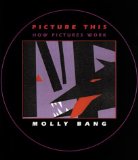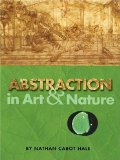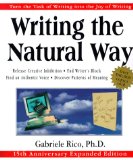I don’t recommend many books on composition. I’ve read at least a dozen and skimmed many more. Some are a waste of time (any book that tells you to divide the canvas into thirds or avoid the center — and really means it — be wary), others are so theoretical that they prompt you to talk about art but never create any. Most of them miss the whole point about the emotional connection between design and audience.
There was a good set of lessons from The Famous Artists School that is out of print and as far as I know, inaccessible.
Hans P Bacher‘s recent books come from a champion artist who composes brilliantly and knows how to explain the elements and principles.
Nathan Fowkes trains students in strong basics. So does Bill Perkins. Marcos Mateu-Mestre. Many other have done the work to make you better.
And then there’s Andrew Loomis. If you had to limit yourself to one teacher in the 20th century for your entire art education, I would recommend Andrew Loomis. He was a very good illustrator and a top-notch teacher. His book Creative Illustration will help you understand composition, even if it’s limited. It is focused on the “classic illustration” style of American illustrators, especially Howard Pyle and the Brandywine school — a glorious tradition with roots that go back a few hundred years, but not diverse enough to satisfy all artists. The book was long out of print, available only on the internet as a poorly-scanned-but-readable pdf. Now it’s back in print here.
Most of what I learned about composition came from thirty years of pursuing it and getting little hints from one artist or another, finding little bits in one book (like How to Draw Comics the Marvel Way which is true to its name) and little bits in another (like The Illusion of Life: Disney Animation which takes six months to read) but I had no worthy textbook. I learned many of the principles by studying story composition and seeing the parallels to painting. George Gallo, the screenwriter who wrote Midnight Run
, said that he studied painting composition and saw the parallels to story structure. I’ve often wondered where he studied painting composition.
There are many artists who know it. More who just feel it. Very few who explain it so that you can understand. Here are some in-print resources that I know and recommend.
Books
Picture This
by Molly Bang
This is a book that shows how she would illustrate Little Red Riding Hood by cutting out pieces of construction paper. It is also the only book on Composition for artists that I can confidently recommend to give you the old wisdom of the masters. That first section on Little Red Riding Hood, if it’s all you knew about composition, would point your head in a direction that leads to mastering pictorial structure. The second section on Principles doesn’t flow as smoothly as the first section, but every page is valuable. Even every sentence. And it’s a short book, less than 100 pages with lots of pictures, and easy to read.
P.S. There are two versions of this book, one with the subtitle Perception and Composition and one with the subtitle How Pictures Work. They are essentially the same book. The only difference is in the shape of the book, the foreword, and perhaps a dozen word changes in the text. —mv
Click to buy from Amazon.com
Abstraction in Art and Nature
by Nathan Cabot Hale
This book will not teach you how to compose paintings. It is not an art instruction book. I think of it as a “vacation book” to read when you have time to observe nature. Nathan Cabot Hale put together a collection of pictures to help you to see beyond literal surfaces. He helps you see patterns. Big structures. Shapes. In a word — Abstractions. It’s what masters of composition use to compose.
Dover Publications has, as with hundreds of other good books, reprinted this cheaply and well. Take your time with it. Enjoy it. It may not seem immediately relevant to artists, but it nurtures a way of seeing that will help you to see the composition of your pictures. —mv
Click to buy from Amazon.com
Writing the Natural Way
by Gabriele Rico
This is an excellent book in every way. The best of its kind. It may seem strange to include it in the Composition book reviews, but Rico has contributed more than anyone to how I teach pictorial composition. It is technically a writing book, focused on what she calls “vignettes” (like poems), but it’s much more than a writing book. It is a course in creativity. She represents the old wisdom that creative people have used for thousands of years to assemble works of art, mainly in the game of finding similarities and differences. Good exercises for writers, too. But will it help you compose pictures? If you can see the relationship between writing and painting, and how both artforms are “composed” (put together), you’ll have fun making the link between disciplines. If you can’t… there’s my class. —mv
Click to buy from Amazon.com
Marshall is a participant in the Amazon Associates program and may earn a small commission on products purchased using these links. The product price is the same whether or not you use these links, but by using them, it helps offset the cost of running this website.


